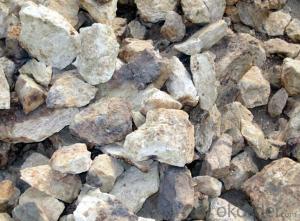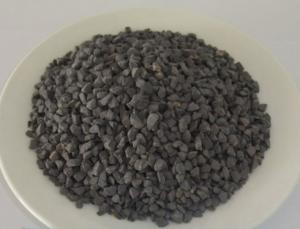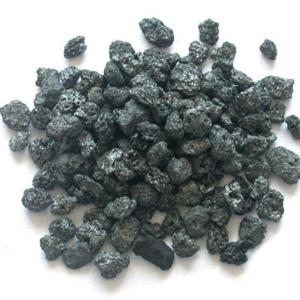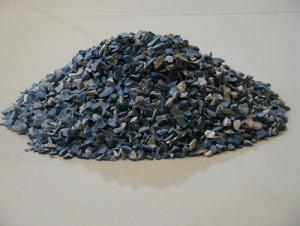Popular in Poland Bauxite of CNBM in China
- Loading Port:
- Tianjin
- Payment Terms:
- TT OR LC
- Min Order Qty:
- 20000 m.t.
- Supply Capability:
- 10000000 m.t./month
OKorder Service Pledge
OKorder Financial Service
You Might Also Like
1.Structure of Calcined Bauxite Description
Bauxite (aluminous soil; Bauxite) is also called the alumina or bauxite, main ingredients are alumina, hydrated alumina containing impurities, is an earthy mineral. White or gray, brown and yellow or light red by iron. From 4 to 3.9 g/cm3 density, hardness, 1 ~ 3 is not transparent, very brittle. Very difficult to melt. Insoluble in water, soluble in sulfuric acid, sodium hydroxide solution. Mainly used for aluminium, refractory material.
2.Main Features of the Calcined Bauxite
Calcined bauxite is one of the principal ore of aluminum. Calcined bauxite contains hydrous aluminum oxides and aluminum
hydroxides, formed through the laterization of aluminous rocks in tropical and subtropical areas .Calcined bauxite is obtained by calcining (heating)superior grade bauxite at high temperature (from 85OC to 1600C) .This removes moisture there. By increasing the alumina content,compared to an alumina content of about 57%to 58% in raw bauxite, calcined bauxite has an alumina content of 84%to88%.The heating is carried out in rotary kilns.
3. Calcined Bauxite Images

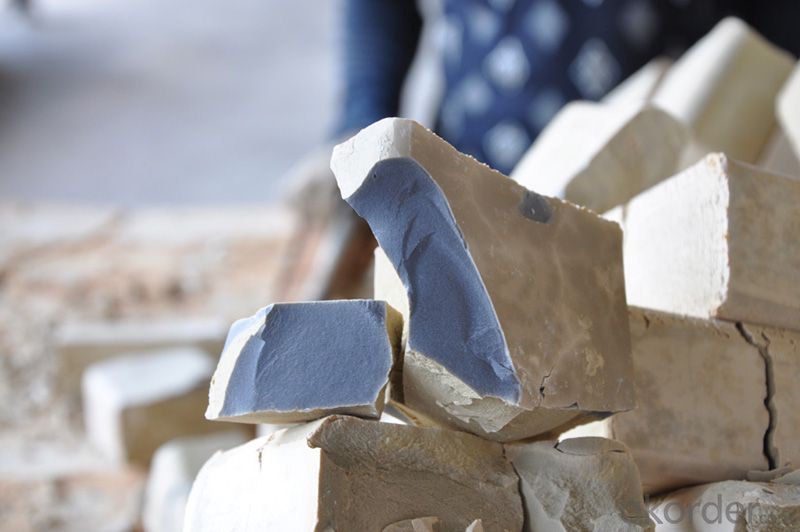
4. Calcined Bauxite Specification
ROTARY KILN BAUXITE
Al2O3 | Fe2O3 | SiO2 | TiO2 | K2O+Na2O | CaO+MgO | B.D (g/ccm) |
min | max | max | max | max | max | min |
88% | 1.8% | 6.5% | 4% | 0.25% | 0.5% | 3.25 |
87% | 2.0% | 7.0% | 4% | 0.25% | 0.5% | 3.15 |
86% | 2.0% | 7.0% | 4% | 0.25% | 0.5% | 3.15/3.10 |
85-80% | 2.0% | 10.0% | 4% | 0.30% | 0.5% | 3.10 |
ROUND KILN BAUXITE
Al2O3 | Fe2O3 | SiO2 | TiO2 | K2O+Na2O | CaO+MgO | B.D (g/ccm) |
min | max | max | max | max | max | min |
88% | 2.0% | 6.5% | 4% | 0.25% | 0.5% | 3.30 |
87% | 2.0% | 6.5% | 4% | 0.25% | 0.5% | 3.25 |
86% | 2.0% | 7.0% | 4% | 0.25% | 0.5% | 3.20 |
85% | 2.5% | 8.0% | 4% | 0.25% | 0.5% | 3.10/3.15 |
5.FAQ of Calcined Bauxite
1). Q: Are you a factory or trading company?
A: We are a factory.
2). Q: Where is your factory located? How can I visit there?
A: Our factory is located in ShanXi, HeNan, China. You are warmly welcomed to visit us!
3). Q: How can I get some samples?
A: Please connect me for samples
4). Q: Can the price be cheaper?
A: Of course, you will be offered a good discount for big amount.
Advantage:
1.High quality and competitive price.
2.Timely delivery.
3.If any item you like. Please contact us.
Your sincere inquiries are typically answered within 24 hours.
- Q:How long does it take for refractory cement to solidify?
- 1. First you should be aware of the concepts of condensation and condesation time. Refractory cement belongs unshaped refractories, which when added water or liquid binding agent to mix, the agitation material will gradually lose thixotropy or plasticity and become in a state of solidification, thus is solidified. The time needed to finish the process is called solidification time. The whole process is divided into initial and final set. When beginning to lose plasticity called the initial setting, when called plasticity completely lost the final setting. 2. For refractory cement, the solidification time depends on the matching of the material and the parts and using methods. Under normal circumstances, in order to meet the requirements of time of construction, the initial set time should be no shorter than 40min, and the final set time should be no longer than 8H 3. There are also some exceptions. When refractory cement is used for spraying and injection operation together with other refractory castable, the set time is required as short as possible, sometimes flash set is required to prevent the occurrence of peeling or collapse of the spraying layer.
- Q:What kinds of fireproof materials does the safe use?
- The fireproof materials of the safe, cement foam. It is often said recently that the safes with cement inside are bad. Actually, it is not like this. Chemical means are taken to make the cement inside safes rise like a leaven dough so as to achieve good insulation. The principle is the cement foam. Fireproof safes with such techniques have good performance in terms of fireproofing and anti-theft. The manufacturing processes of this fireproof safe are highly technical, some safes with poor techniques have problems in quality. Here are some data of the foam cement.
- Q:Does anyone know what is a lightweight refractory material?
- Light weighted castable is one of the kind.
- Q:What's the commonly used refractory material for ladle?
- Commonly used types of refractory material for ladle are as follows: high-alumina brick, clay brick, magnesia-carbon brick, aluminum carbon brick, magnesia chrome brick, spinel brick, corundum brick, high alumina castables, aluminum silicon carbide carbon castables, refractory castables for ladles, magnesium castables, magnesia chrome spray coating, dry vibration materials, etc. Hope it's helpful for you!
- Q:Which kind of furnace hearth refractory is better?
- Coal is acidic medium, so the matched material should be acidic refractories oriented, like silica?bricks. For example, the coking coke oven and carbon furnace made of carbon are in reducing atmosphere, so they use silica bricks which have low price and good high-temperature indicators. If the part has special requirements, you can then consider other refractory on request.
- Q:Urgently!! Refractory problems, online, etc.
- I feel that is the coating package, the coating of water is too large, the retaining wall in fused powder hydrated, can not produce strength under high temperature. What do you think?
- Q:How to divide the fire rating standards of insulation materials?
- 1. According to the GB8624-97 national standard, building materials can be divided into following levels in terms of combustion performance. A-level: Non-combustible building materials: Materials almost don't burn. B1-level: Fire-retardant building materials: Fire-retardant materials are good at resisting flame. It is difficult for them to burst into fire when coming across open fire in the air or at high temperature. It will not quickly get wilder and when the fire source removes, it will be extinguished immediately. B2-level: Combustible building materials: Combustible building materials can play a certain role in preventing combustion. It will immediately burst into flames when coming across open fire or at high temperature, and will lead to fire spreading, such as wooden pillars, roof frames and beams as well as stairs. B3-level: Inflammable building materials: Inflammable building materials are highly flammable with no flame retardant ability. The fire risk is high. 2.The exterior wall thermal insulation materials can be classified according to fire rating. 1. Insulation materials with A-level combustion performance: rock wool, glass wool, foam glass, ceramic foam, foam cement, close-celled perlite, etc. 2. The insulation materials with B1-level combustion performance: specially-treated extruded polystyrene boards(XPS)/ specially-treated Polyurethane(PU), Phenolics, Polystyrene rubber powdery particles,etc. 3. Insulation materials with B2-level combustion performance: Expanded polystyrene sheets(EPS), Extruded polystyrene board(XPS), Polyurethane(PU), Polyethylene(PE), etc.
- Q:who knows the requirements of refractory for forge furnace?
- Requirements are as follows: 1, it should have enough refractoriness and softening point under a fixed load. Because under the effect of electric arc, inner surface temperature in different parts of furnace lining can reach 1500 ~ 1800 ℃. 2, it should have strong slag resistance. Because slag and smoke at high temperature penetrate through furnace lining to its internal lining, causing the melting of refractory, organization stratification, and even peeling?off. 3, it should have good thermal shock resistance. Because in the process of steelmaking, openning the oven door and lifting the furnace lid will make temperature of refractories in the furnace lining change rapidly, it might happen peeling?off and cracking, causing the premature failure of furnace lining. 4, it should have sufficient strength, because the furnace lining will be shocked when being loaded, vibrated when being tilted, scoured by metals,molten slag and air flow when boiling. 5, smaller thermal conductivity, lower electrical conductivity. Commonly used refractories for electric furnace include magnesia bricks, dolomite brick, high alumina refractory brick, siliceous refractory brick and magnesite ramming material,etc. owing to the different work environment of each part of the furnace,refractory used by each part is also different.
- Q:what's the classification of fireproof materials?
- Fireproof materials are used in construction, in various forms and it has played an absolute role in modern fireproofing, common fireproofing materials include fireproof?panel, fire door, fireproofing glass, fire?retardant?coating, fireproof bag,etc Or the material itself has a high temperature resistance, heat-resistant, flame-retardant properties. Most of them are used for the construction industry.
- Q:Who knows the fire endurance of B-level fireproof doors and windows?
- Rock wool board of B-grade fireproof doors keeps 46mm in thickness, doors that are generally used in relatively common fire fighting access, while A-grade fireproof doors are generally used in machine rooms, warehouses, oil depots and other important fire fighting access and flammable and combustible pulbic places. B-grade fireproof doors are more widely used than A-grade fireproof doors.
1. Manufacturer Overview |
|
|---|---|
| Location | |
| Year Established | |
| Annual Output Value | |
| Main Markets | |
| Company Certifications | |
2. Manufacturer Certificates |
|
|---|---|
| a) Certification Name | |
| Range | |
| Reference | |
| Validity Period | |
3. Manufacturer Capability |
|
|---|---|
| a)Trade Capacity | |
| Nearest Port | |
| Export Percentage | |
| No.of Employees in Trade Department | |
| Language Spoken: | |
| b)Factory Information | |
| Factory Size: | |
| No. of Production Lines | |
| Contract Manufacturing | |
| Product Price Range | |
Send your message to us
Popular in Poland Bauxite of CNBM in China
- Loading Port:
- Tianjin
- Payment Terms:
- TT OR LC
- Min Order Qty:
- 20000 m.t.
- Supply Capability:
- 10000000 m.t./month
OKorder Service Pledge
OKorder Financial Service
Similar products
New products
Hot products
Related keywords
